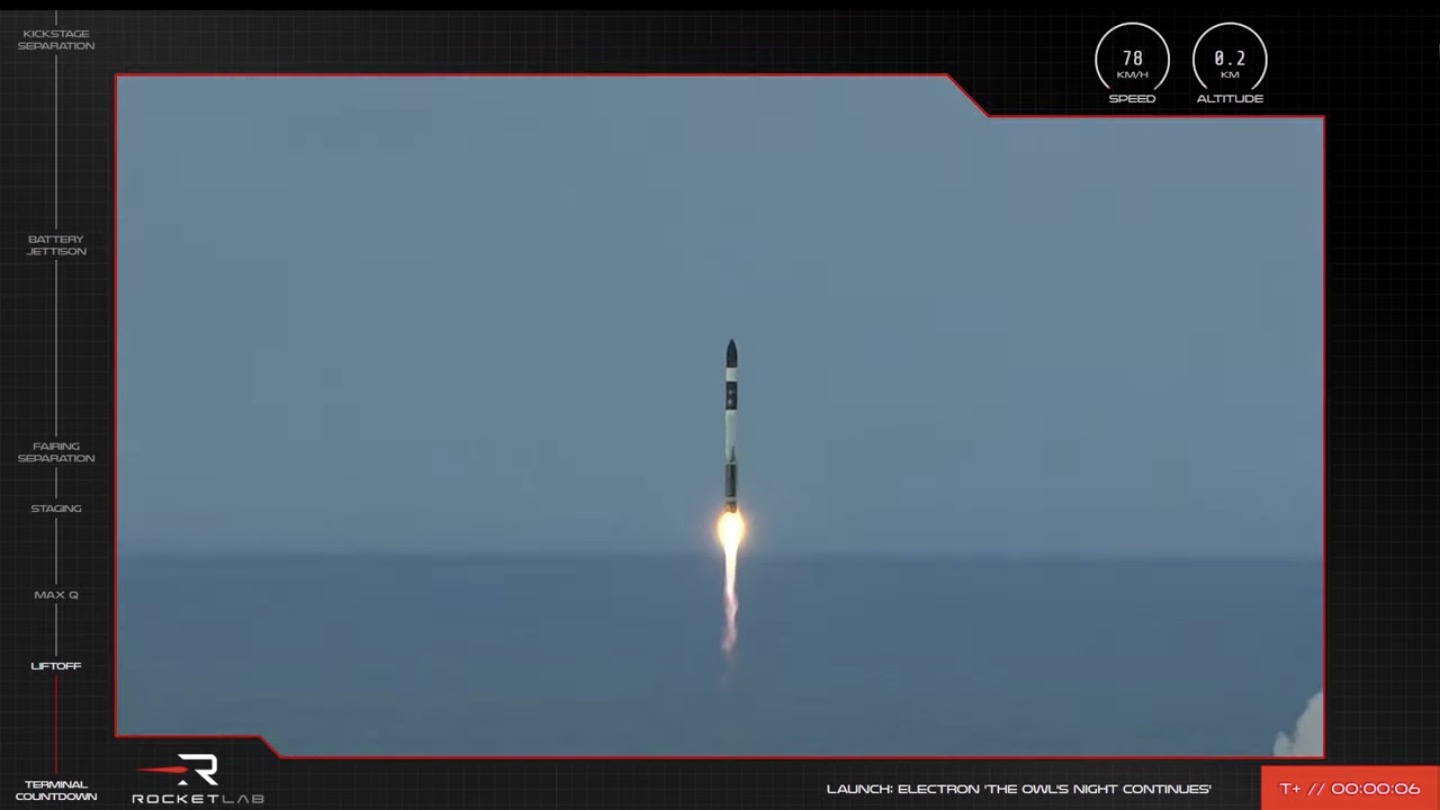Pad B's debut mission went off without a hitch.
Rocket Lab lofted a private Earth-observation satellite today (Feb. 28) from the newly finished second pad at its Launch Complex 1, on New Zealand's North Island.
An Electron rocket topped with Strix-β, which will be operated by the Japanese company Synspective, lifted off from Pad B at 3:37 p.m. EST (2037 GMT) on a mission Rocket Lab calls "The Owl's Night Continues." (Strix is a genus of owls that includes species such as the barred owl and the great gray owl.) Fifty-three minutes later, Strix-β deployed as planned into its designated orbit, 349 miles (561 kilometers) above our planet.
Related: Rocket Lab and its Electron booster (photos)

"The Owl's Night Continues" was the 24th launch for Rocket Lab and the 59-foot-tall (18 meters) Electron, which gives small satellites dedicated rides to orbit. The previous 23 flights had all taken off from Pad A at Launch Complex 1. Bringing a second pad online at the site will make a big difference, Rocket Lab representatives said.
"The addition of Pad B increases Rocket Lab's responsive launch capabilities and support[s] an increased launch cadence by eliminating the time it takes to recycle and prepare the current pad between missions, making it possible to launch multiple missions just days apart," the company wrote in the press kit for "The Owl's Night Continues," which you can find here.
Rocket Lab has also built a third pad, at the Mid-Atlantic Regional Spaceport on Virginia's Wallops Island. Delays with a NASA-developed autonomous flight termination system have prevented Rocket Lab from flying from Virginia so far. But the agency recently released that system to industry partners, so the company may be able to launch from the site in the near future.
Get the Space.com Newsletter
Breaking space news, the latest updates on rocket launches, skywatching events and more!
As its name suggests, "The Owl's Night Continues" is not the first mission that Rocket Lab has flown for Synspective; an Electron launched the StriX-α satellite in December 2020 on "The Owl's Night Begins." And more will follow; Rocket Lab is contracted to launch one more StriX mission this year and another in 2023, company representatives said.
Synspective is building a constellation of more than 30 Strix satellites, which will observe Earth using synthetic aperture radar. Together, these spacecraft will "collate data of metropolitan centers on a daily basis to support urban development planning, construction and infrastructure monitoring and disaster response," Rocket Lab representatives wrote in the press kit for "The Owl's Night Continues."
Rocket Lab is working to make the first stage of the two-stage Electron reusable; on several previous missions, the company has brought Electron boosters back to Earth in soft ocean splashdowns and recovered them for investigation and analysis. "The Owl's Night Continues" did not feature such a recovery, company representatives said.
Mike Wall is the author of "Out There" (Grand Central Publishing, 2018; illustrated by Karl Tate), a book about the search for alien life. Follow him on Twitter @michaeldwall. Follow us on Twitter @Spacedotcom or on Facebook.
Join our Space Forums to keep talking space on the latest missions, night sky and more! And if you have a news tip, correction or comment, let us know at: community@space.com.

Michael Wall is a Senior Space Writer with Space.com and joined the team in 2010. He primarily covers exoplanets, spaceflight and military space, but has been known to dabble in the space art beat. His book about the search for alien life, "Out There," was published on Nov. 13, 2018. Before becoming a science writer, Michael worked as a herpetologist and wildlife biologist. He has a Ph.D. in evolutionary biology from the University of Sydney, Australia, a bachelor's degree from the University of Arizona, and a graduate certificate in science writing from the University of California, Santa Cruz. To find out what his latest project is, you can follow Michael on Twitter.









